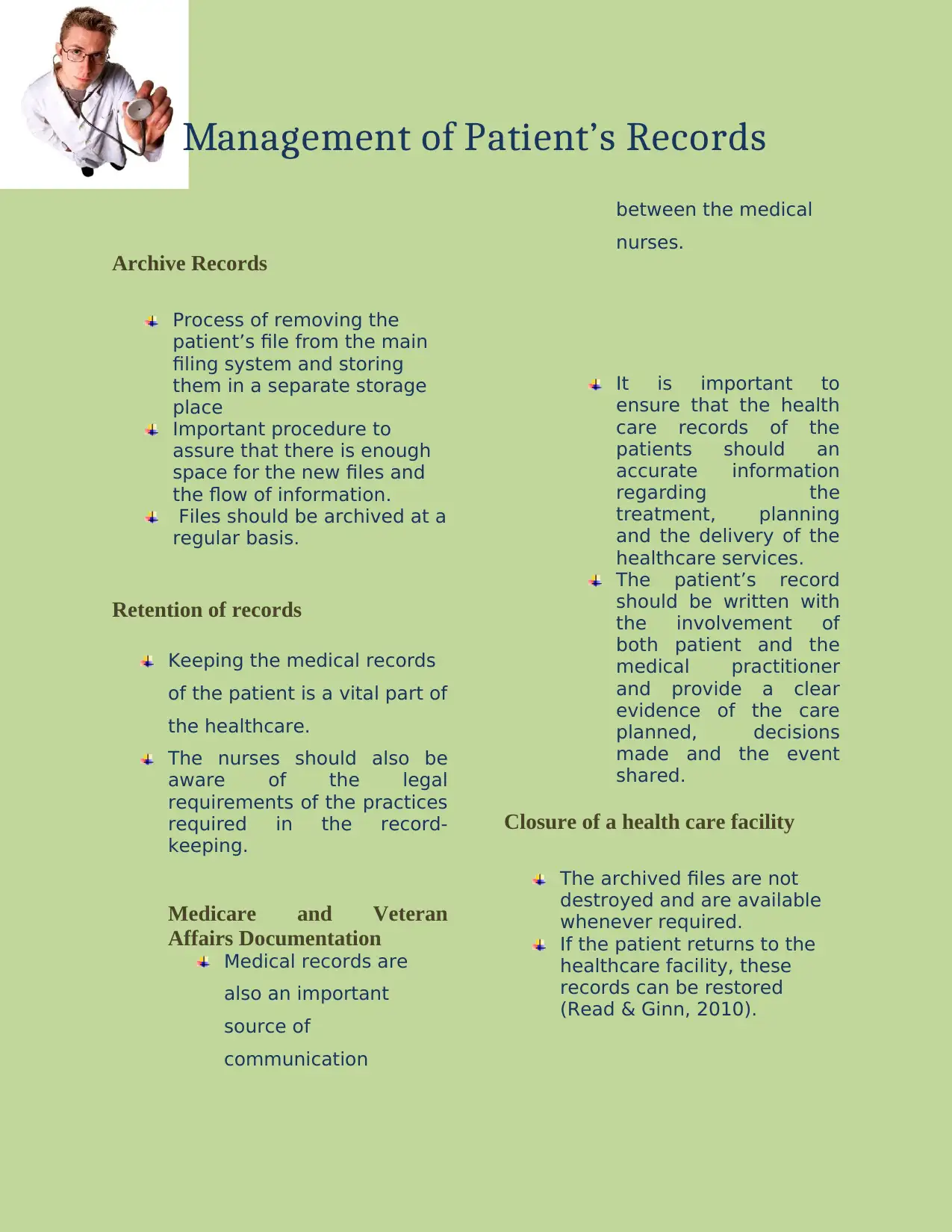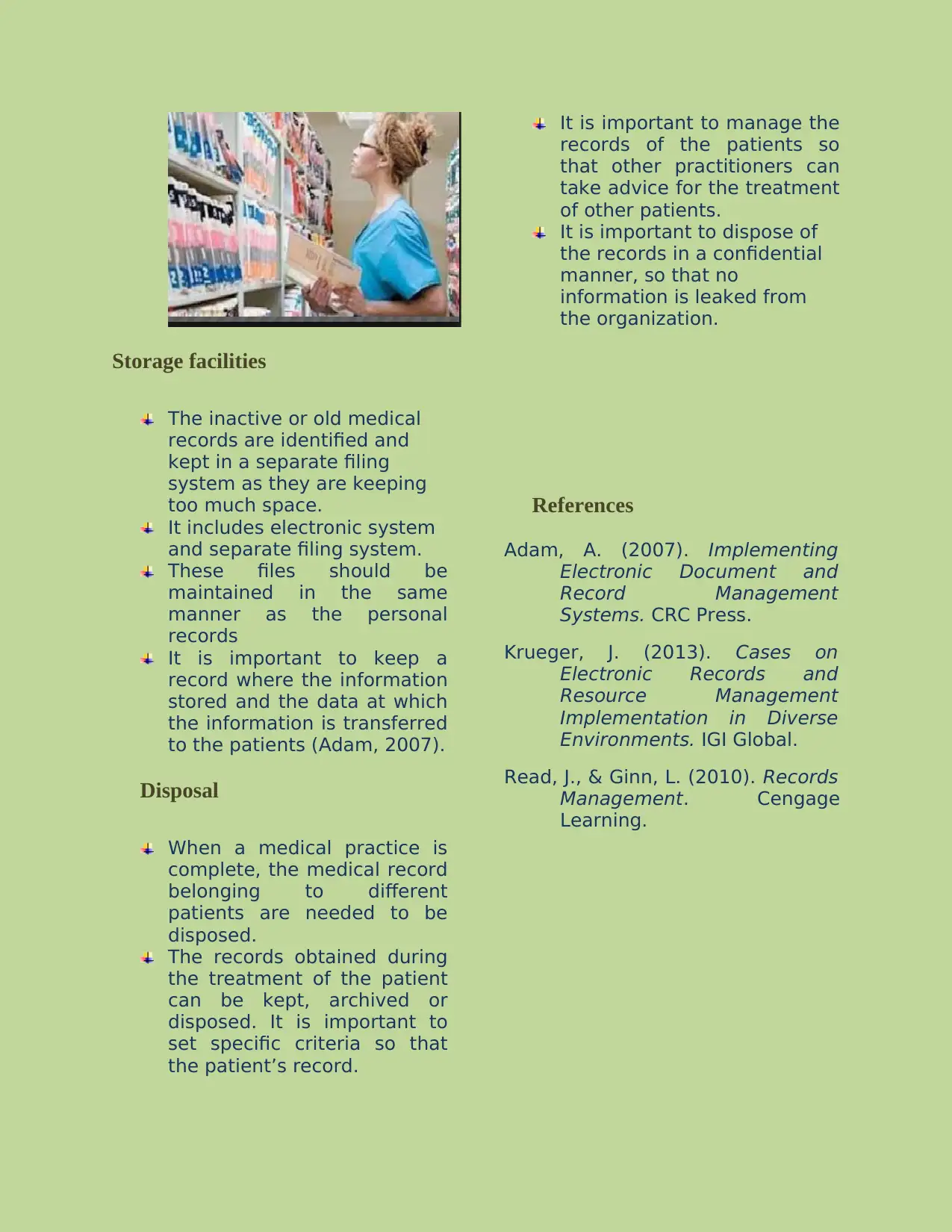Patient Records Management: Archive, Disposal, Retention, and Medicare
VerifiedAdded on 2020/04/21
|2
|461
|47
Report
AI Summary
This report focuses on the critical aspects of patient records management in healthcare settings. It explores the processes of archiving patient records, emphasizing the need for efficient storage solutions to manage space and maintain accessibility. The report details the importance of record retention, adhering to legal requirements and ensuring the availability of information for future reference. It highlights the role of medical records in communication among healthcare professionals, including the documentation of treatments, planning, and care delivery. The report also addresses the disposal of patient records, emphasizing the need for confidentiality and adherence to specific criteria. The report also covers the impact of Medicare and the closure of healthcare facilities on patient records. The report provides the importance of electronic and separate filing systems for old records and the transfer of the data to patients.
1 out of 2








![[object Object]](/_next/static/media/star-bottom.7253800d.svg)